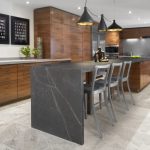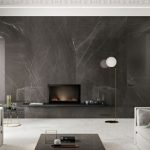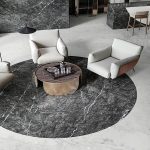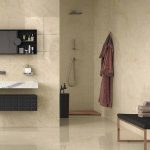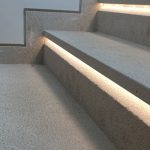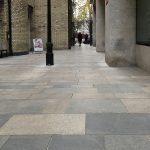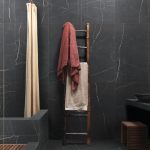Sawed marble, Rough honed, Fine honed, Polished, Chiselled and other Surface Finishes
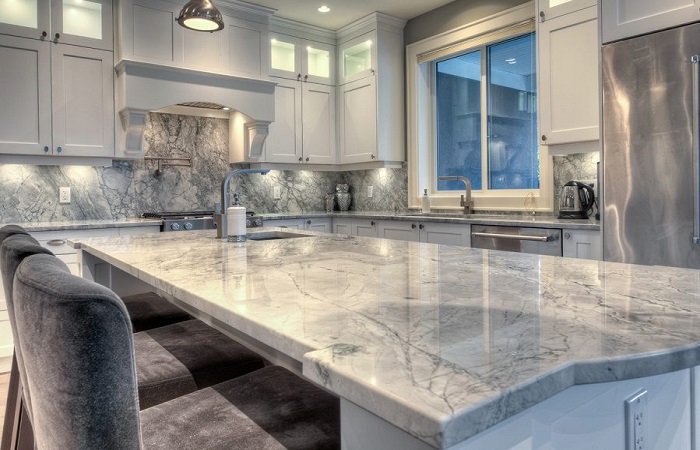
Sawed marble, Rough honed, Fine honed, Polished, Chiselled and other Surface Finishes
Sawed marble, rough honed, fine honed and polished are some surface finishes known internationally. The surface of natural stone may be finished in a wide variety of ways. It is important to choose natural stone finishes suitable for an intended use. Using different techniques and mechanical processes, natural stone can be adapted to interior and exterior applications. Natural finish, polished finish and aged finishes are the most popular stone finishes:
Natural Finish
The natural surface finish is basically the absence of treatment. Stone is sold as extracted from the quarry, once cut into the desired format. Final look depends entirely on the characteristics of the stone and its exploitation. This finish is appropriated for cladding and cobblestones. After explaining these surface finishes, we will briefly discuss endless possibilities for marble finishing.
Polished Finish
Stones are polished by repeated application of abrasive treatments. This technique produces a shiny surface, with almost zero porosity, while improving resistance. Polished finish highlights the color and properties of the natural stone. It is commonly used as interior wall and floor dressing, as well as bench tops and in kitchen countertops. It is not recommended for outdoor paving, since it reduces slip resistance.
Aged Finish
This procedure is characterized by the use of constant vibration on the stone surface to simulate aging. Although different methods are used to achieve this finish, all generate soft surfaces.
Marble Finishing Possibilities
Marble offers endless possibilities, both in terms of its wide variety of tones, as well as its different types of finish. This is undoubtedly a multi-purpose building material with an aspect that can vary according to each project’s requirements.
Therefore, the different types of marble finishes available allow us to provide each environment with a different character, a feature that is highly appreciated by both architects and interior designers. In order to change the marble’s superficial aspect, we apply different abrasive treatments to the stone. These treatments and the equipment used shall depend on the required finish.
There are two different types of abrasives available:
Natural Abrasives
Natural abrasives includes diamond, quartz, sandstone, emery and corundum. As indicated by their name, these are obtained directly from nature. However, these products are not recommended in order to achieve a rough marble finish. This is because they do not achieve a quality finish. Therefore, in these cases we use artificial abrasives.
Artificial Abrasives
Artificial Abrasives includes silicon carbide, boron nitride, aluminium oxide, etc. By using these abrasives, we can grind, polish, rectify and sharpen marble.
Most Common Marble Finishes
Following is a detailed list of the most common types of marble finishes, including:
- Sawed marble
- Rough honed
- Fine honed
- Polished
- Chiselled
- Antiqued
- Bush hammered
- Sand blasted
- Split faced
- Flamed
- Sawed marble
Sawed Marble
Also known as raw or dressed marble, is simply obtained by sawing the marble slab using diamond wires or blades. In this case, the resulting marble surface will be rough, coarse and dull. Also, when the material is cut using blades, the cutting marks will still be visible on its surface. This type of finish is the previous step before applying any other treatment, such as rough honing. What can sawed marble be used for? This type of surface provides the natural stone with additional grip, making it ideal for outdoor use.
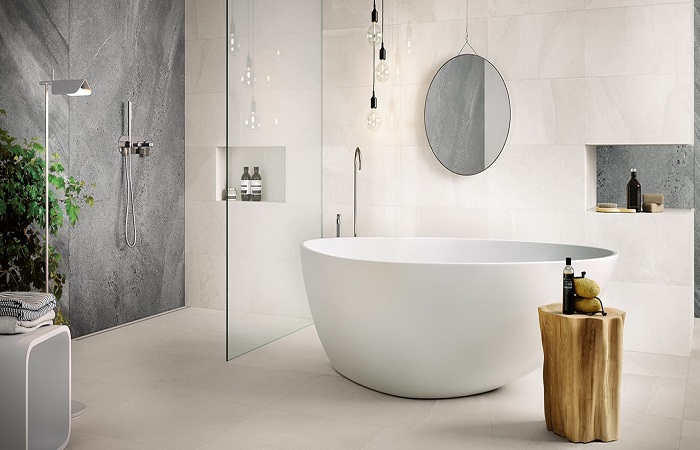
Rough Honed Marble
Rough honing is the following stage after sawing. In this case, although the cutting marks will be no longer visible, the marble surface will remain matt. In order to achieve this finish, we use a grade 60 carborundum disc. Following the rough honing process, the next stage in the marble finishing process will be the fine honing.
Fine Honed Marble
Unlike with the rough honing, we use a higher grade 120 carborundum disc for the fine honing process. In this manner, the resulting marble surface is much smoother and matt than with the previous finish. This is the previous step before polishing. In general terms, this type of finish is mostly used for outdoor marble flooring and cladding.
Polished Marble
In this case, the polished finish is obtained through the repeated application of abrasives upon the marble’s surface, in order to achieve a smooth, glossy aspect. On the other hand, through polishing we also reduce the material’s porosity, an important aspect to consider in the case of marble worktops as well as wall and floor tiling, splash-backs and cladding. Since polished marble surfaces do not provide sufficient grip, particularly when wet, they are particularly recommended for indoor use.
Chiselled Marble
Chiselled marble is achieved by carving grooves of different thickness on the marble, in the same manner as the chisels that were used in the past.
Antiqued Marble
Our aim when applying this technique is to reflect the passage of time upon the material. For that reason, we use brushes with the purpose of providing a smooth but rugged and worn out aspect at the same time.
This type of finish is mostly used for splash-backs, indoor wall and floor tiling.
Bush Hammered Marble
Bush hammered marble is obtained by striking a bush hammer on top of the material’s surface to achieve a rugged, uniform appearance. Depending on the spacing and size of the points, as well as the intensity of the strikes, we shall obtain a finer or coarser finish. Bush hammered marble finishes are mostly recommended for outdoor use.
Sand Blasted Marble
Blasted marble finish is produced by blasting small particles of silicon or corundum sand towards the marble surface in order to corrode it. Sand blasting results in a similar but less rugged aspect than that achieved with the bush hammering technique. Therefore, it can be used for indoor splash-backs and wall tiling as well as outdoor cladding and flooring.
Split Faced Marble
Our aim when applying this technique is to obtain a rustic finish that can be achieved by using a chisel. By striking this utensil on the marble surface, it produces chips or splinters thus obtaining a more abrupt aspect.
Flamed Marble
This treatment achieves a coarse, uneven look and it is applied by brief exposure to intense heat. By applying this technique to marble, it becomes ideal for both indoor wall tiling and splash-backs, as well as outdoor cladding.
Split Faced Marble
And finally, Split faced marble is used both outdoors in façade cladding and indoors for wall tiling.
For further information regarding marble and other types of natural stone, stay with us.
To learn more about us, click here.
Send your price quotes directly to our WhatsApp through this Link: https://wa.link/ord5k8
Sources
www.pulycort.com/en/marbles/types-of-marble-finishes.html
cupastone.com/10-types-of-natural-stone-finishes/
- Back To Articles
- Aged Finish, armani grey marble, armany grey, Artificial Abrasives, Bush hammered, Bush hammered Sand blasted Split faced, Chiselled and other Surface Finishes, Fine honed, Flamed, grey Armany, marble finishing, Marble Finishing Possibilities, marble processing, Most Common Marble Finishes, Natural Abrasives, Natural Finish, Pietra Grey Marble, Pietra Grey Marble Tiles, Polished, Polished Finish, Rough honed, sand blasted, Sawed marble
Article
Natural Stone Applications
- 22 December 2022
Iranian Stones Introduction According to Source and Quarry
- 21 December 2022
Technical Stone Introduction and Quarrying Procedures
- 21 December 2022
Categories
- blog757
- news1
- Specialized articles756

